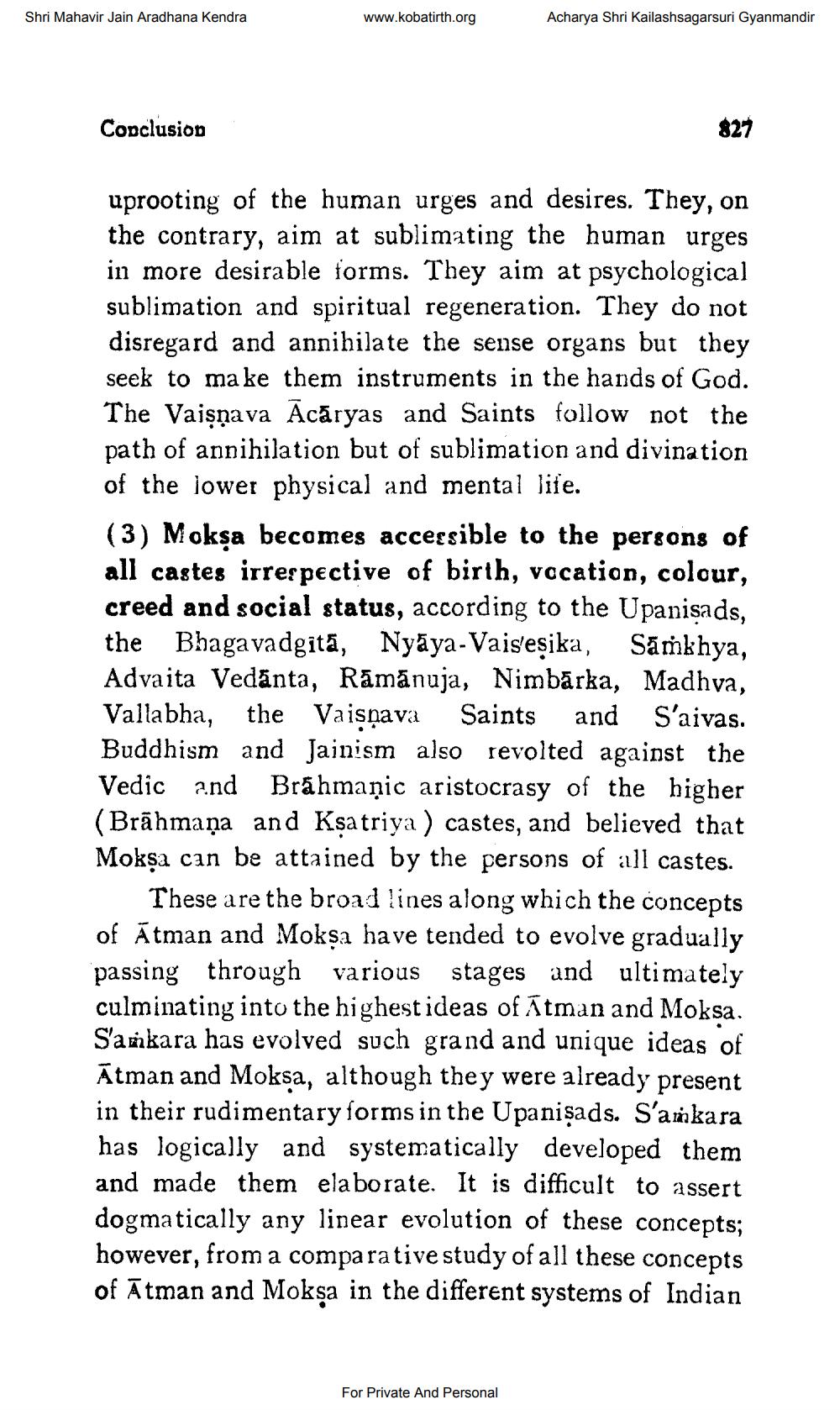________________
Shri Mahavir Jain Aradhana Kendra
www.kobatirth.org
Acharya Shri Kailashsagarsuri Gyanmandir
Copclusion
827
uprooting of the human urges and desires. They, on the contrary, aim at sublimating the human urges in more desirable forms. They aim at psychological sublimation and spiritual regeneration. They do not disregard and annihilate the sense organs but they seek to make them instruments in the hands of God. The Vaisnava Acāryas and Saints follow not the path of annihilation but of sublimation and divination of the lower physical and mental lile. (3) Moksa becomes accessible to the persons of all castes irrespective of birth, vacation, colour, creed and social status, according to the Upanisads, the Bhagavadgitá, Nyāya-Vaisesįka, Sāmkhya, Advaita Vedānta, Rāmānuja, Nimbārka, Madhva, Vallabha, the Vaisnava Saints and S'aivas. Buddhism and Jainism also revolted against the Vedic and Brāhmaṇic aristocrasy of the higher (Brāhmaṇa and Ksatriya ) castes, and believed that Mokșa can be attained by the persons of all castes.
These are the broad lines along which the concepts of Ātman and Moksa have tended to evolve gradually passing through various stages and ultimately culminating into the highest ideas of Ātman and Moksa. Samkara has evolved such grand and unique ideas of Ātman and Moksa, although they were already present in their rudimentary forms in the Upanişads. S'amkara has logically and systematically developed them and made them elaborate. It is difficult to assert dogmatically any linear evolution of these concepts; however, from a comparative study of all these concepts of Ātman and Moksa in the different systems of Indian
For Private And Personal




